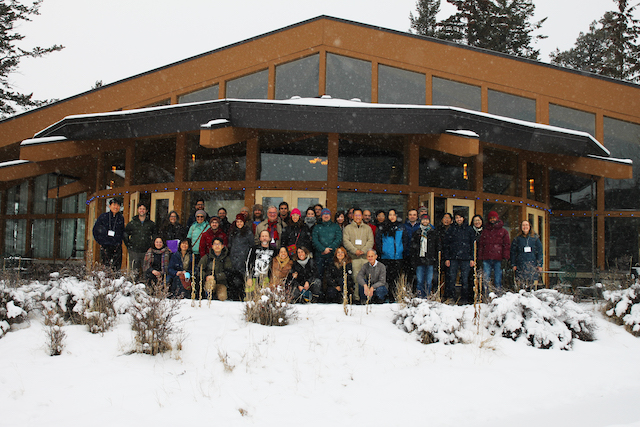Toric Degenerations (22w5022)
Organizers
Lara Bossinger (Universidad Nacional Autónoma de México)
Alessio Corti (Imperial College London)
Megumi Harada (McMaster University)
Fatemeh Mohammadi (Ku Leuven)
Description
The Banff International Research Station will host the "Toric Degenerations" workshop in Banff from December 04 - December 09, 2022.
Geometry is a main pillar of both classical and modern mathematics, from the ancient Greeks (cf. Euclid’s Elements) to the 2014 Fields medalist Maryam Mirzhakhani, who was honored for her work on the interplay of dynamics and geometry.
Geometry is the study of the shapes, sizes, and patterns of the many spaces which naturally arise in mathematics and other contexts, such as the “space” of possible configurations of a robot; the space of solutions to a differential equation describing fluid flow; the space of desirable parameters that enable machine learning; and “space-time” used to model our universe. In all these examples, the fundamental geometric properties of the “space” in question have a direct bearing on its global properties – is it finite or infinite? Is it flat or is it curved? Answers to these questions have significant consequences; indeed, general relativity informs us that gravity is an artifact of the curvature of space-time. Thus, geometry is a critical component of many science and engineering disciplines, including but not limited to: physics and astronomy, chemistry, biology and biostatistics, mechanics, etc., and it is natural that the continued pursuit of geometry is central to modern mathematics. This can also be gleaned from the list of all Fields Medals (= the “Nobel Prize of Mathematics”) since its inception in 1936: indeed, 29 out of 55 award citations mention a geometric aspect of the recipient’s research.
Algebraic geometry is a particular research area within geometry as a whole. It is the study of systems of polynomial equations, which are ubiquitous in mathematics and its applications. Hence it rightly occupies a central place in mathematics. Indeed, Algebraic Geometry is both a beautiful intrinsic and extremely active subject in pure mathematics as well as a broad interdisciplinary area with applications to diverse scientific fields. Due to its explicit nature, algebraic geometry also has applications to e.g. (algebraic) statistics, optimization and stochastic processes, coding and complexity theory, and biology and dynamical systems. The topic of our workshop is ``toric degenerations’’, which can be thought of as spaces of solutions to polynomial equation which additionally exhibit the maximal possible number of mutually compatible symmetries. The presence of these symmetries allows mathematicians to glean information about these spaces that would not otherwise be possible. One of our intended applications, and topics to be pursued at the workshop, is to exploit these symmetries to better understand the process of matrix completion. This is a method frequently used in automated, computer-based decision-making algorithms. A famous example where this technique is used is the ``Netflix problem”: how to make a computer algorithm decide which movies to recommend to a Netflix user.
The Banff International Research Station for Mathematical Innovation and Discovery (BIRS) is a collaborative Canada-US-Mexico venture that provides an environment for creative interaction as well as the exchange of ideas, knowledge, and methods within the Mathematical Sciences, with related disciplines and with industry. The research station is located at The Banff Centre in Alberta and is supported by Canada's Natural Science and Engineering Research Council (NSERC), the U.S. National Science Foundation (NSF), Alberta's Advanced Education and Technology, and Mexico's Consejo Nacional de Ciencia y Tecnología (CONACYT).






